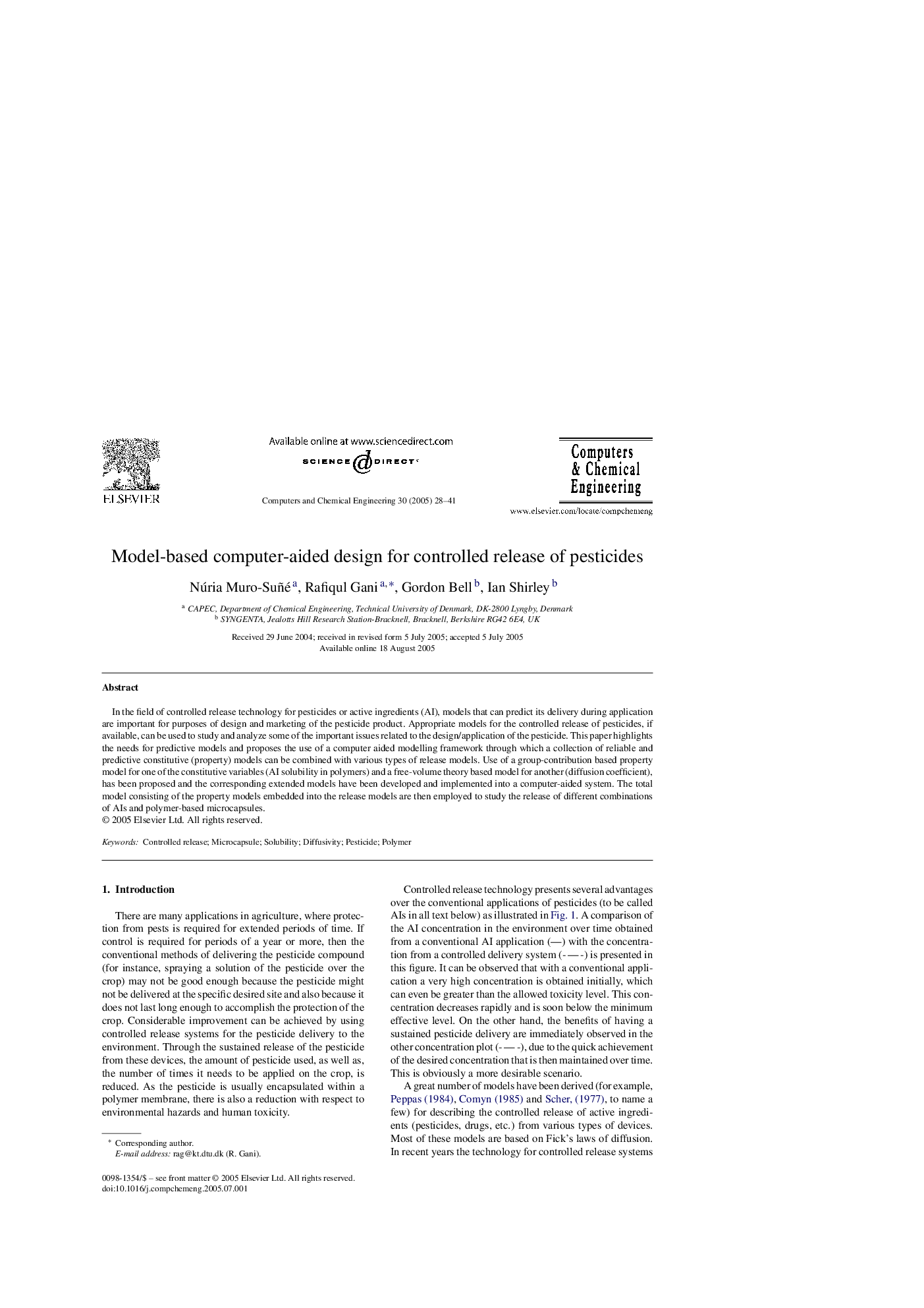| Article ID | Journal | Published Year | Pages | File Type |
|---|---|---|---|---|
| 10265687 | Computers & Chemical Engineering | 2005 | 14 Pages |
Abstract
In the field of controlled release technology for pesticides or active ingredients (AI), models that can predict its delivery during application are important for purposes of design and marketing of the pesticide product. Appropriate models for the controlled release of pesticides, if available, can be used to study and analyze some of the important issues related to the design/application of the pesticide. This paper highlights the needs for predictive models and proposes the use of a computer aided modelling framework through which a collection of reliable and predictive constitutive (property) models can be combined with various types of release models. Use of a group-contribution based property model for one of the constitutive variables (AI solubility in polymers) and a free-volume theory based model for another (diffusion coefficient), has been proposed and the corresponding extended models have been developed and implemented into a computer-aided system. The total model consisting of the property models embedded into the release models are then employed to study the release of different combinations of AIs and polymer-based microcapsules.
Related Topics
Physical Sciences and Engineering
Chemical Engineering
Chemical Engineering (General)
Authors
Núria Muro-Suñé, Rafiqul Gani, Gordon Bell, Ian Shirley,
